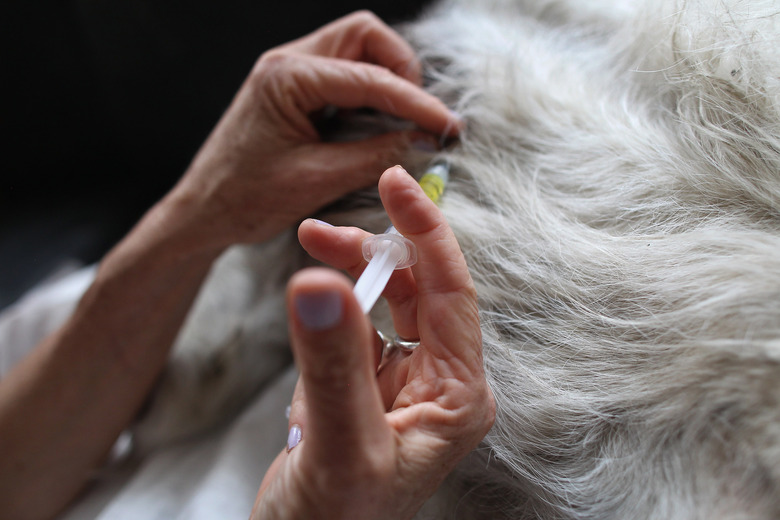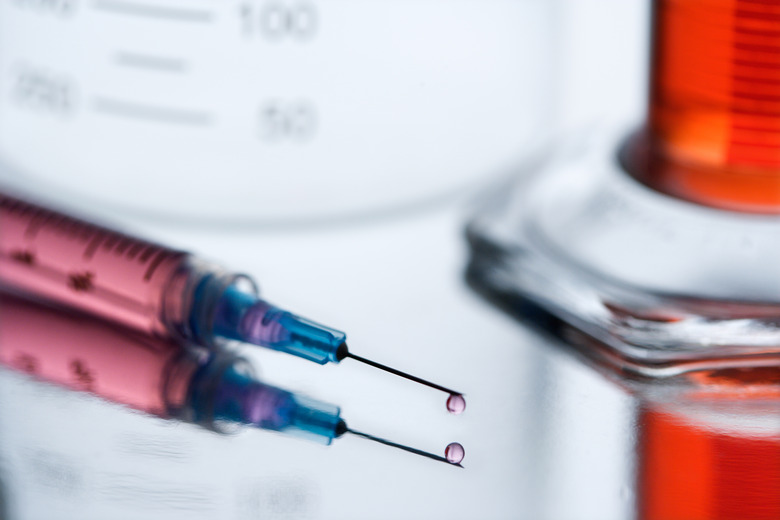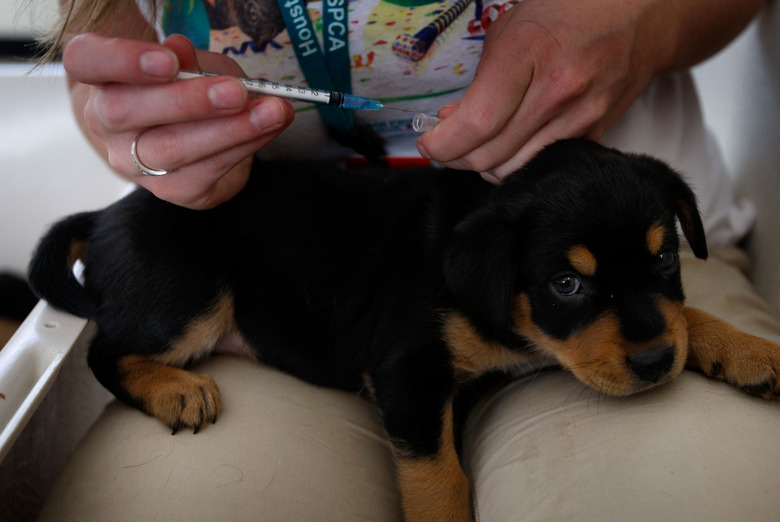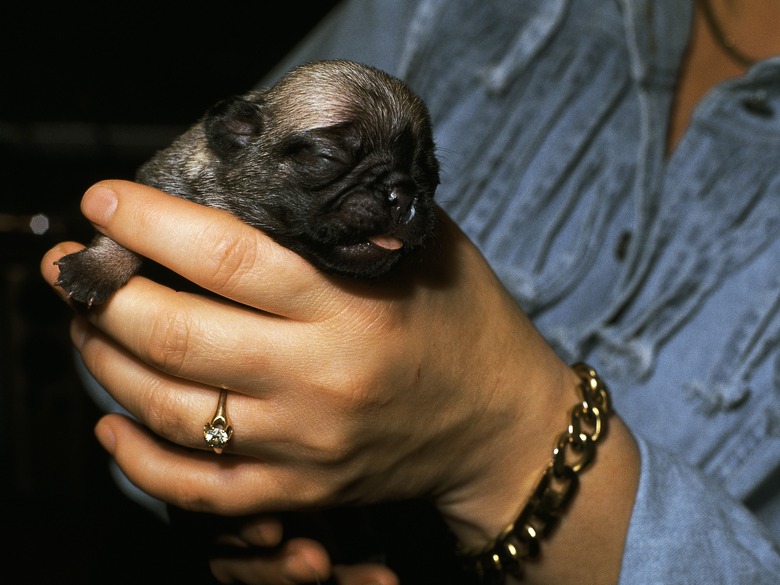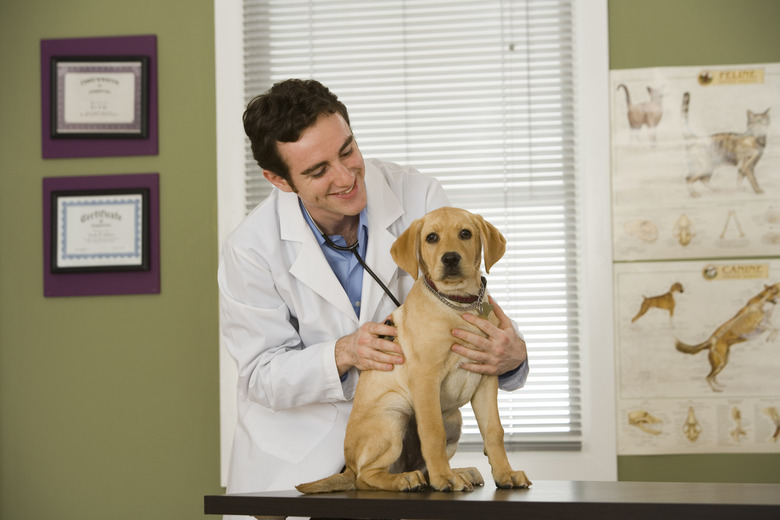What Is In The 8 In 1 Shot For Dogs?
One of the best things you can do for your puppy is to get its shots soon after it reaches the 12 week mark and annual boosters thereafter. Rather than put your furry friend through a painful series of shots to cover all of the inoculations that your veterinarian might recommend for good health, an injection exists that is a combination of eight common vaccinations.
Vaccines In The 8-In-1 Shot
Vaccines In The 8-In-1 Shot
The injection vaccinates the dog against seven common, debilitating diseases, which are: parvo, distemper, respiratory disease (Adenovirus Type 2), canine hepatitis (Adenovirus Type 1), parainfluenza, 2-leptospirosis and corona virus. The eighth vaccine, for rabies, is typically added as a separate injection at the same time.
Possible Side Effects
Possible Side Effects
Your dog may experience the following adverse reactions after receiving the 8-in-1 shot: fatigue and sleepiness, soreness at the site of the shot, muscle soreness, joint stiffness and low-grade fever.
Always watch your dog for signs of allergies, which include skin eruptions and the inability to breathe normally. The most dangerous allergic reaction is the swelling of the throat, which can cause suffocation.
Benefits
Benefits
Puppies that live in close proximity to other dogs are much more susceptible to the vast array of diseases against which the 8-in-1 protects. Many of the viruses are passed to puppies quite early and with great ease within a kennel or litter and the 8-in-1 can give the puppy and growing dog a fighting chance against these life-threatening diseases. Another benefit is one of convenience with only having to take one trip to the veterinarian's office. The cost of the 8-in-1 as a single injection can also be less expensive than paying for each vaccination separately.
Criticism
Criticism
Many critics of the 8-in-1 shot believe that all of the vaccines are not necessary and can be more dangerous than helpful. The 2-leptospirosis vaccine, in particular, is a key agent in creating adverse side effects in puppies, which some consider to be unnecessarily cruel for a puppy. Those who advise against the 8-in-1 shot say it is little more than unnecessary over-vaccination. Some pet advocates suggest that owners get the smaller dosed 6-in-1 combination shot (without the 2-leptospirosis and corona virus vaccinations) and rabies shots only every 3 years.
Another issue with the 8-in-1 vaccination lies with when to administer it. Not all puppies respond at the same rate to vaccinations. While some litters will respond at 6 weeks, others will not get the protection of the medication until 9 or 12 weeks. Therefore, many veterinarians prefer to provide a smaller combination shot (3 shot) with boosters of other vaccinations every three months. Of course, this strategy is more expensive for the owner and requires more trips to the vet's office.
What Dogs Should Avoid The 8-In-1 Shot?
What Dogs Should Avoid The 8-In-1 Shot?
A puppy younger than 5 weeks should not get the 8-in-1 vaccination.
Any dog that has already been infected with one of the diseases that the 8-in-1 vaccinates against might be more adversely affected than helped by the injection. Similarly, any puppy that is considered weak or ill should not use the combination vaccination injection.
Dogs or puppies that are not exposed to others may not need all of the vaccinations provided in the 8-in-1.
Always consult your veterinarian regarding whether a combination vaccination is right for your dog.
Obtaining The 8-In-1 Injection
Obtaining The 8-In-1 Injection
Only a licensed veterinarian should administer the 8-in-1 vaccination to your dog.
Always check with your veterinarian before changing your pet's diet, medication, or physical activity routines. This information is not a substitute for a vet's opinion.
